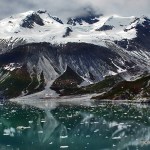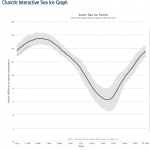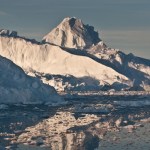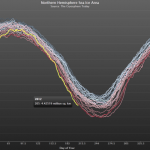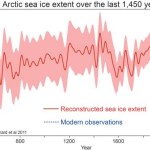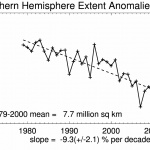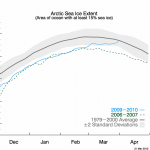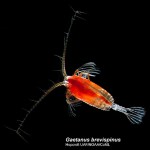arctic
Alaska is being called the poster child (state?) for climate change because things have been so strange there lately. One reason for this is the extreme warm conditions in the North Pacific and associated (probably) changes in the jet stream, as well as overall warming, which has caused coastal Alaska to become a warm place, glaciers to melt, and (in the farther north) sea ice to be less. And now, President Obama has made a trip there and given a big speech.
President Obama's speech:
https://www.youtube.com/watch?v=FvIrlaXU28A
More information on the President's trip here.
Meanwhile,…
Lots to talk about here:
Published on Aug 1, 2014
Arctic Emergency: Scientists Speak On Melting Ice and Global Impacts (1080p HD)
This film brings you the voices of climate scientists - in their own words.
Rising temperatures in the Arctic are contributing the melting sea ice, thawing permafrost, and destabilization of a system that has been called "Earth's Air Conditioner".
Global warming is here and is impacting weather patterns, natural systems, and human life around the world - and the Arctic is central to these impacts.
-------------------------------------------------
Scientists…
Everything is about ice these days, what with the Winter Olympics in full swing. Concerns that the temperatures at the mountain venue of Sochi would be problematically high have panned out; the lower parts of the downhill slopes are slushy and the bottom of the half-pipe is all bumbly wumply. Injuries and lost medal opportunities are mounting up every day, in part caused by the unusual "Spring" conditions.
We all know the Arctic Vortex has been sitting on the middle of North America, and this has caused near zero F temperatures, often as low as -20F, here in central Minnesota. The same…
The planet has passed a disturbing landmark, a marker on a continuing highway to climate disruption. On May 9th, the NOAA and the Mauna Loa observatory reported that atmospheric CO2 levels touched 400 parts per million. Before humans started burning fossil fuels, they were around 280 parts per million.
Mauna Loa measurements of carbon dioxide. From http://keelingcurve.ucsd.edu/
The last time atmospheric CO2 was at 400 parts per million was during the ancient Pliocene Era, three to five million years ago, and humans didn’t exist.
Global average temperatures were 3 to 4 degrees C…
From NASA:
PASADENA, Calif. - An international team of experts supported by NASA and the European Space Agency (ESA) has combined data from multiple satellites and aircraft to produce the most comprehensive and accurate assessment to date of ice sheet losses in Greenland and Antarctica and their contributions to sea level rise.
In a landmark study published Thursday in the journal Science, 47 researchers from 26 laboratories report the combined rate of melting for the ice sheets covering Greenland and Antarctica has increased during the last 20 years. Together, these ice sheets are losing…
Some interesting goings-on in the cryosphere these days.
In this chart (click the link for an interactive, larger resolution version) from the cryosphere today we can see that we are on the 45th day in a row of daily record lows in sea ice area.
Note that this is area which is different from extent. Area refers to the actual ice cover, I am not sure of the details of how that is defined in practice, whereas extent refers to any ocean surface that contains 15% or more ice cover. Again, there will be technical details I am not familiar with for determining the edges of extent (e.g.…
The Economist has a Special Report on "The melting north" (hopefully that works for you, I have a subscription so I'm not sure if its behind their paywall or not).
And what it says -
A heat map of the world, colour-coded for temperature change, shows the Arctic in sizzling maroon. Since 1951 it has warmed roughly twice as much as the global average. In that period the temperature in Greenland has gone up by 1.5°C, compared with around 0.7°C globally. This disparity is expected to continue. A 2°C increase in global temperatures—which appears inevitable as greenhouse-gas emissions soar—would…
No, this is not Steve McIntyre finally coming out with his own multi-century proxy temperature reconstruction. Nor is it Anthony Watt's release of his surfacestations.org temperature reanalysis.
It is the take away figure from a recent paper in Nature by Kinnard et al that reconstructs the extent of arctic sea ice over the last 1450 years.
Tamino has a discussion of it here.
There is not really much to add to the thousand words that image conveys.
Well, it is that time of year again, the sea ice in the Arctic has reached its minimum extent.
(please note that the image above shows the August data, September's graphic is not yet available though it will look very similar)
So how's that "recovery" coming along? According to NSIDC, this year's September minimum is the second lowest in the satellite record.
Peter, over at Climate Crock of the Week, presents his latest video on that topic, a very sober and sobering placement of this year in its long term context:
Once again, the choice is between the "climate skeptics" and your lying…
It won't be news to most of my readership, but it is worth noting that the one thing that seems to be certain about climate change is that the 2007 IPCC report understated things. Sigh.
Sharon
There's more than a few climate bloggers who have a dirty little secret. We like to excoriate those who can't tell the difference between weather and climate, or herald every momentary drop in temperature as evidence that global warming has ended, or revel in each new report that suggests not every single square millimeter of the planet's surface is experiencing dramatic climate shifts. As we should. But many of us take a peek, every morning, at the daily version of a graph from the National Snow and Ice Data Center depicting current sea-ice extent in the Arctic.
We know that what happens…
No too long ago the usual suspects were all a-twitter about arctic sea ice, which was tracking very close to the long term average.
This was in late March, and though you would think a weather man would understand what weather is, this temporary upwards tic prompted the remarkable vapidity of this lead: "We've all seen that Arctic Sea ice area and extent has expanded and is back to normal".
Well, that was then, and this is now:
Now, not only have we left the long term average behind, the current seasonal extent has dipped below one standard deviation less than normal and is even well…
From up north, we have some more troubling news. Actually very troubling. Catastophic release of methane hydrates is a prime suspect in a few events dramatic enough to show in the earth's geological records, coarse and obscured as that record may be. (Our actions today will be featured prominently in that record for anyone looking back a million years from now.) It has been a worry for many years that humanity is running the risk of triggering such a release again, which would truly pile disaster on top of calamity.
New research coming out in Science today indicates that this most dire of…
Not Exactly Pocket Science - panic aboard the Titanic, the rise of polar bears and emasculated frogs
I'm trying something new. Right from the start, I've always tried to write fairly long and detailed write-ups of new papers but this means that on any given week, there are always more stories than time and my desktop gets littered with PDFs awaiting interpretation.
So, I'm going to start doing shorter write-ups of papers that don't make the cut, linking to more detailed treatments on other quality news sources. This is something that I hope science journalists will do more of. It stems from a Twitter conversation where I asked if I should (a) write up short versions of these stories, (b)…
I've just flown from London to North Carolina, a trip of around 6,200km. As flights go, it's a pathetic one, a mere jaunt in the park compared to the epic voyage of the Arctic tern. Every year, this greatest of animal travellers makes a 70,000 km round-trip, in a relentless, globe-trotting pursuit of daylight. In summer, it spends its time in the sun-soaked Arctic and in winter, it heads for the equally bright climes of Antarctica. In its 30 years of life, this champion aeronaut flies more than 2.4 million kilometres - the equivalent of three return journeys to the Moon.
The…
A recent comment, here, questions the AGW prediction of polar amplification. He cites a paper by Polyakov et al that he claims shows temperatures in the arctic were warmer than they are now earlier in the 20th century.
[Update: paper is here[PDF]]
I don't have access to the paper or time to research it well, does anyone else have any comments? My initial impression is that it is about ocean temperatures in one region of the north Atlantic, and I do not trust the numbers he quotes which came from CO2 Science, a site that habitually misrepresents the papers it highlights. But that is hardly…
The Census of Marine Life has just released a study of the ocean creatures living in the Arctic and the Antarctic with a startling revelation: 235 identical species thrive in the waters around the North and South Poles, despite the distance 11,000 kilometers between them.
The nemertean pelogonemertes rollestoni and its oddly shaped see-through stomach
While some of the animals migrate to the different areas from warmer seas (whales, birds, etc.) there are some creatures that are too small to migrate and thus are evidently identical species who are born and die in their separate poles.…
This is just one of dozens of responses to common climate change denial arguments, which can all be found at How to Talk to a Climate Sceptic.
Objection:
Sea ice at the north pole recovered a whopping 9.4% from 2007 to 2008 despite the doom and gloom predictions of the alarmists. Yet another wheel falls off the global warming bandwagon.
Answer:
It is true that the minimum summer ice extent in the arctic ocean in 2008 was 9.4% higher than the minimun in 2007. But calling this a recovery is simply not justifiable, not even by a long shot. Firstly, at 4.52 million square kilometers, this…
Zooillogix would like to take a moment to introduce you to Parborlasia corrugatus, a proboscis worm residing in the waters of Antarctica. We should note that we were inspired to learn more about these cute little fellows from this outstanding pic we saw on Ugly Overload.
Photo credit Jeff Miller
P. corrugatus grows up to two meters in length, comes in a variety of delightful colors, and kills its prey by rapidly and repeatedly stabbing it with a harpoon-like barbed proboscis! This proboscis has adhesive secretions which secure it in place. When threatened, this fast moving giant death worm…
Some very cool BBC vids of arctic wolves getting pestered by snowy owls, then doing some pestering of their own.
Both videos are below the fold because, unfortunately, we can't seem to prevent them from both running automatically and don't want you to startle your cubicle mate unintentionally.
Methinks the snow geese should have taken this threat a little more seriously...
